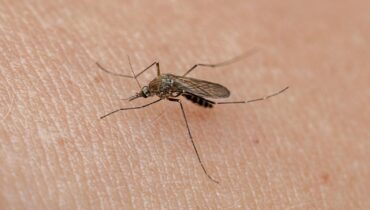📌 Terrifying Mutant Deer Spotted With Flesh Bubbles Sparks Outbreak Fears Across the US

Posted 22 August 2025 by: Admin
Disturbing Sightings Reported
Cases have emerged in states including Pennsylvania and Wisconsin, where residents shared photos of deer roaming freely despite their grotesque, lumpy appearance. The bizarre condition has drawn comparisons to past viral animal oddities, such as Colorado’s “Frankenstein rabbits” and reports of “zombie squirrels.”
However, experts confirm the truth is less alarming than it appears. Wildlife officials explain that the growths are caused by **deer fibroma**, a long-documented viral infection, and not a new mutation or direct threat to humans.
What Is Deer Fibroma?
According to the Maine Department of Inland Fisheries and Wildlife, deer fibroma is caused by a species-specific papillomavirus, similar to those that cause warts in other animals. These appear as dark, warty growths on the skin, ranging from small bumps to large, lumpy masses.
While some deer may only develop a few fibromas, others can suffer widespread growths across their bodies. Viral images circulating online show deer with large lumps on their faces and torsos, leading to wild speculation about gunshot wounds, tumors, or even prion diseases like chronic wasting disease. Experts stress that such theories are unfounded—fibromas are benign and often disappear naturally over time.
Transmission and Risks
The virus only affects deer and cannot be transmitted to humans or other species. It spreads through shared feeding areas, bedding spots, and rubbing posts during mating season.
Although fibromas themselves are harmless to people, wildlife officials caution that deer can still indirectly pose health risks due to ticks, which transmit illnesses like **Lyme disease**. With deer often living near human communities, tick-borne illnesses remain a broader public health concern.
Prognosis for Infected Deer
In most cases, deer recover on their own as their immune systems fight off the virus. There is no effective treatment for wild populations, though surgical removal is possible in captive settings. Wildlife managers may consider euthanasia only in severe cases where growths interfere with vision, mobility, or feeding.
Climate Change and Social Media Amplification
Experts say the sudden surge in awareness stems from a mix of climate change and social media exposure. Warmer conditions across North America are expanding the habitats of ticks and mosquitoes, which contribute to the spread of wildlife diseases.
At the same time, viral posts amplify these sightings far beyond scientific or hunting communities, fueling speculation and fear. Dr. Omer Awan of the University of Maryland noted that climate change is shifting disease ranges, pointing to Lyme disease now appearing in areas such as southern Canada and northern Maine.
Viral Fascination With “Mutant” Wildlife
Stories of strange animals—from two-headed snakes to albino alligators—have always fascinated the public. Social media has only intensified the spread of such cases, with fibroma-infected deer now joining the ranks of viral wildlife oddities.
But wildlife experts caution against panic. Fibromas are not evidence of a new outbreak and pose no direct danger to humans. Most affected deer live normally and recover naturally.
The Bottom Line
While the sight of deer with flesh bubbles is disturbing, experts emphasize that **deer fibroma is a known, non-threatening condition**. It highlights broader issues of climate change, human encroachment on habitats, and how social media shapes public perception of wildlife health.
For now, wildlife officials urge the public not to intervene but to report severely affected animals to local authorities. The unsettling images may continue to spread, but the “mutant deer” are not the sign of an impending ecological disaster.




















